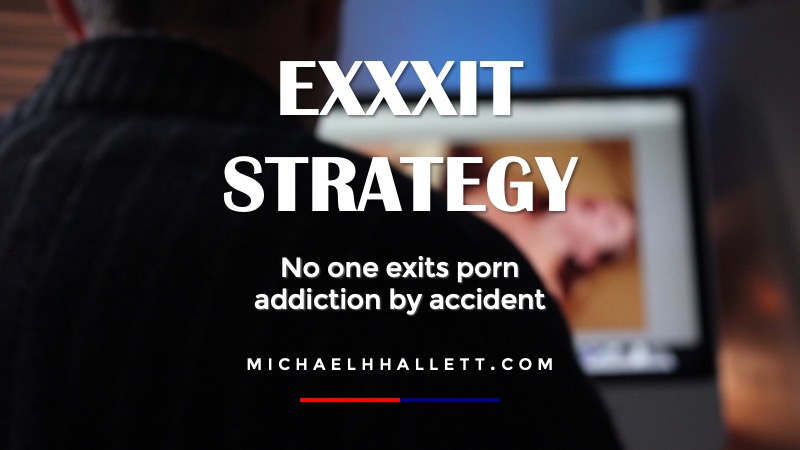Porn therapies – symptom management or root cause resolution?
- 22 January 2019
- Posted by: Michael H Hallett
- Category: Pornography ,

When it comes to porn therapies, there are two ways you can go. The first is the way that most of us unconsciously drift into—symptom management. We try to stop watching porn, first by a simple act of will: “No, I’m not going there. All right, I’ll watch a little porn—but on a timer. I’ll give myself an hour—okay, two.” Cue another all-night binge. We’ve all been there. It’s how it starts.
Porn therapies
Once we recognise our inability to control our porn viewing through will, a second level of symptom management kicks in: delaying or blocking software. Here the idea is that if we can delay or stop the gratification that porn provides that the desire for that gratification will disappear. It doesn’t, it just worsens and festers. It finds ways to subvert or circumvent the obstacles in its path. Our porn consumption becomes sneakier, prone to subterfuge, pitting us into a cat-and-mouse game against ourselves.
The final level of symptom management is accountability. Here we promise to be honest to someone else—perhaps a priest, our partner or an online porn forum—about our consumption. Every time we consume, we confess. Here the driving mechanism for the symptom management is shame: viewing porn is shameful, but having to tell someone else about it is more shameful.
Two wrongs
Shame is never healthy and always involves a fundamental denigration of the self. The notion that one shame might trump another is a clear case of two wrongs not making a right. The addict is left in the unenviable, unhealthy, and ultimately untenable position of having to constantly chose between these two forms of shame.
The real problem with symptom management is just that—it’s only symptom management. Even if an addict is able to control their porn habit through some form of management, they haven’t addressed the underlying problem.
But the real problem with symptom management is just that—it’s only symptom management. Even if an addict is able to control their porn habit through some form of management, they haven’t addressed the underlying problem: a toxic set of negative beliefs about women, objectified sexuality, the shamefulness of sex, and the low worth of those with sexual desires outside social high-water marks (which is pretty much everyone).
That leaves us with root cause resolution.
Outside-in or inside-out?
While symptom management tackles the problem from the outside in, root cause resolution addresses it from the inside out. It starts with those toxic beliefs and unravels them one by one. It’s slow and painful work, but it works. The proof of this is that the addict’s porn viewing behaviour changes and ultimately ceases.
The key difference between symptom management and root cause resolution is responsibility. With symptom management, the addict looks to find an external agency—blocking software, a confessor figure—to take responsibility for the situation. They have abdicated responsibility for their own involvement in the process.
Root cause resolution restores the responsibility to where it properly belongs—the addict. It’s not enough to admit to being addicted and then throw up our hands in helplessness. True responsibility involves recognising that our hunger for porn stems from our toxic sexual beliefs and the only responsible long-term solution is to heal those beliefs.
When you’re ready for root cause resolution, I’m ready for you.
ONLINE COURSE
Photo by Ani Kolleshi on Unsplash

